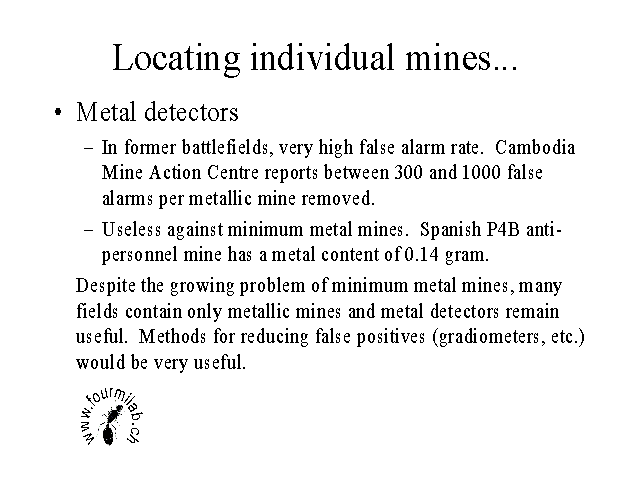

|
|
|
Metal detectors have been the mainstay of mine clearance since before the Second World War, and they remain so today. Even though nonmetallic bakelite mines were laid by the Germans as early as 1944 and minimum metal mines are an ever-growing problem today, the majority of mines in the ground can be found by metal detectors, and a substantial percentage of the mined terrain today contains exclusively metallic mines.
Metal detectors are effective, but they detect any metallic object in the ground. Former battlefields contain all kinds of metallic debris: shrapnel, cartridge cases, bullets, discarded magazines, which result in between 300 to 1000 false alarms per metallic mine detected. Each detection must be probed to determine whether it is a mine or a false alarm.